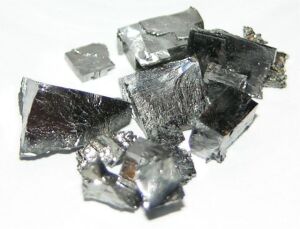Korean scientists work on new CT imaging agent
by
Brendon Nafziger, DOTmed News Associate Editor | April 29, 2011

Tantalum
Korean scientists said they've developed a process for creating batches of safe, relatively inexpensive nanoparticle imaging agents for computed tomography scans of the heart and lymph nodes.
The agents, described in the May issue of the Journal of the American Chemical Society, are made of tantalum oxide nanoparticles.
According to the American Chemical Society, unlike current CT imaging agents, the new one lasts long enough in the body to enable imaging of many different organs. Also, unlike other nanoparticles, which use expensive materials, such as gold, or toxic ones, such as bismuth, tantalum oxide is "cost-effective" and seemingly safe. The researchers, led by Taeghwan Hyeon, with Seoul National University in South Korea, studied the agent on rats and said it "did not affect normal functioning of organs."
In the current paper, the researchers also said the imaging agent "exhibited remarkable performances" with CT angiography and image-guided lymph node mapping in rats
This is one of a number of CT nanoparticle projects in the pipeline. In February, researchers at Washington University School of Medicine in St. Louis reported developing bismuth nanoparticles for spectral, or multicolor, CT imaging, a type of CT imaging where the machine analyzes the full spectrum of the X-ray beam to distinguish between different kinds of metal. The agent, which is bound to fatty acid chains that don't dissolve in the body, rendering it harmless, could help doctors detect blood clots, according to the researchers.
The current research was funded by the Korean Ministry of Education, Science and Technology and the National Research Foundation of Korea.
|
|
|
You Must Be Logged In To Post A Comment
|
